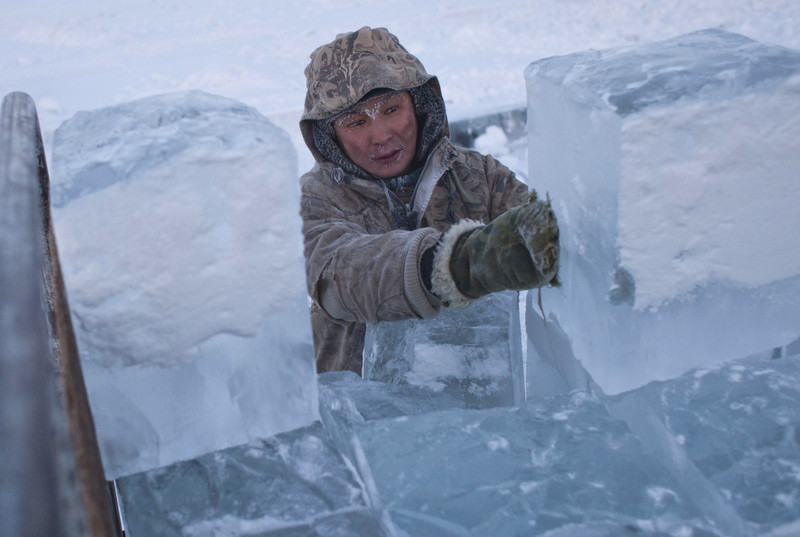
Here in New Orleans temperatures bottomed out at 23°F this morning, sure that seems like nothing if you live in Minnesota, where temps bottomed out in the -20s, or even Mississippi, where temperatures dropped into the single digits, but for those of us in the Crescent City, where many homes including this blogger’s don’t have heat, 23 is cold. Which got me thinking about hypothermia, and more specifically, paradoxical undressing…
The condition typically occurs in severe cases of hypothermia. Victims become disoriented and confused then begin taking off their clothes. This, of course, only hurries along the hypothermia. Sometimes rescuers incorrectly assume that victims have been the subject of a sexual assault.
Other Great Reads: Death Panels refuted, but not in Serbia, Japan or the Arctic
One could imagine the beauty of garment liberation when your body is breaking to bits, but why does this really happen?
It is not entirely known, though one explanation is that the hypothalamus, the part of the brain that regulates body temperature, simply stops working properly. Perhaps something like how extreme cold will cause your iPhone or laptop to malfunction. Another theory is that the blood vessels on the outer parts of your body relax, leading to a sudden surge of blood to your extremities, which fools you into feeling overheated.
Or, in the words of a pair of doctors writing in the International Journal of Legal Medicine:
The reason for this paradoxical behaviour seems to be the effect of a cold-induced paralysis of the nerves in the vessel walls, which leads to a vasodilatation, giving a feeling of warmth. Another theory proposes that the reflex vasoconstriction, which happens in the first stage of hypothermia leads to paralysis of the vasomotor center giving rise to the sensation that the body temperature is higher than it really is and in a paradox reaction the person undresses.
Other Great Reads: What to do after an accidental death
A related hypothermia-induced behavior is known as terminal burrowing, which occurs in the absolute final stages of hypothermia, often after the paradoxical undressing. Afflicted people will seek out small, enclosed spaces, such as underneath beds or behind wardrobes.
“The clothes of the bodies were always strewn on the ground in front of the final position, sometimes forming a trail,” reads the International Journal of Legal Medicine article. “In every case the paradoxical undressing had obviously happened before this self-protective burrowing behavior… In most cases the final position in which the bodies were found could only be reached by crawling on all fours or flat on the body, resulting in abrasions to the knees, elbows, etc.”
A 1979 article in the Journal of Forensic Science found that of 33 cases of hypothermia collected from Swedish police reports, most of the victims were drunk. Last month in Maywood, New Jersey a 53 year-old woman was found dead in a park, with empty bottles of alcohol as well as much of her clothing strewn beside her. She had crawled behind a row of bushes. Police declined to comment on whether or not she died of paradoxical undressing, but it was suspected.
And last December two men in Manitoba, Canada were found outdoors suffering from severe hypothermia after their snowmobile went through swamp ice near a beaver dam. One of the men had removed his socks and shoes. “Normally, that’s the last thing they do before they die,” explained a University of Manitoba professor. “Just before they become unconscious, we know that people tend to have this feeling of warmth flushing over their body.”
New Jersey may be colder than Louisiana and Manitoba is colder than New Jersey but nobody knows cold like Siberia. The Russian town of Oymyakon, in eastern Siberia, is considered the coldest town on earth. The 500-person town is sandwiched between two mountain ranges. On February 6, 1933 a record low of -90°F was recorded, the lowest temperature ever recorded in the northern hemisphere (only Antarctica is colder). The average high temperature in January is -45F. Even in April lows can drop below -50F. In winter an ice fog often hangs over the frigid valley. Wool blankets are put over car engines to keep them warm, and if you turn your engine off at all while outside the car simply won’t start again unless you light a fire near the engine to warm it back up.
What about snow days? Hah, yeah right. The school in Oymyakon only closes when temperatures go below -62F.
And what do people there think about the cold?
“The cold in my area is dry,” said Bolot Bochkarev, a tour guide in the neighboring city of Yakutsk. “I mean, no wind factor. So, even when it is much below minus 50 degree Centigrade, it is not so bad.”
“In my case,” he added, “I would prefer to have the extreme, but dry cold, than mild winter weather with winds.”
Sure, Bolot.









